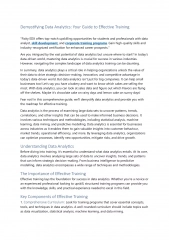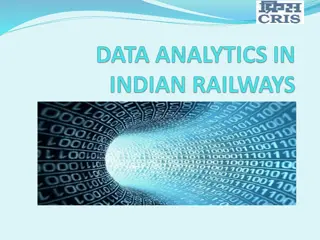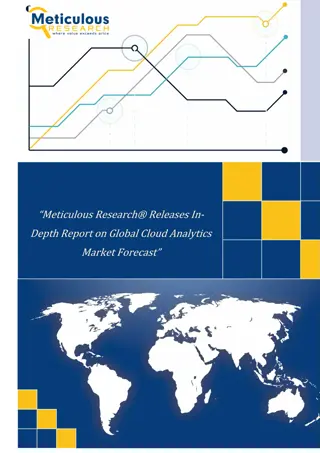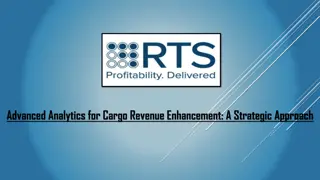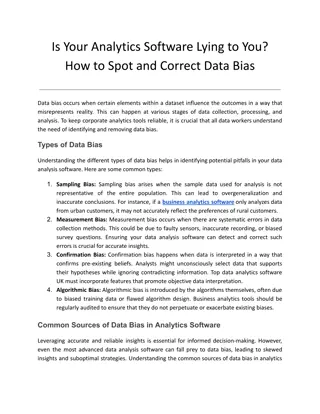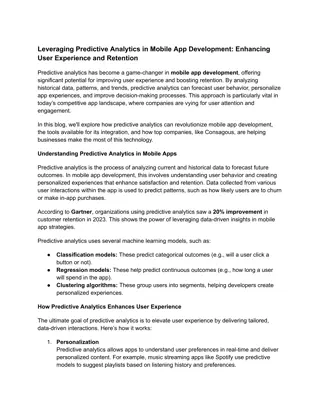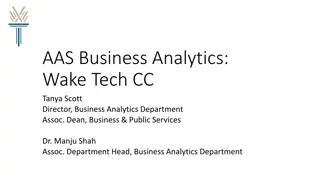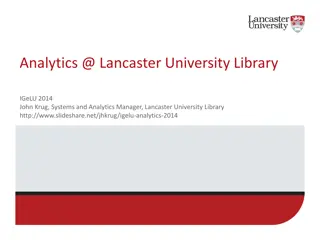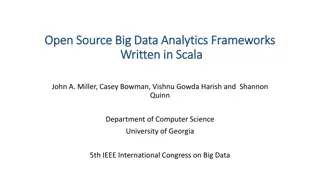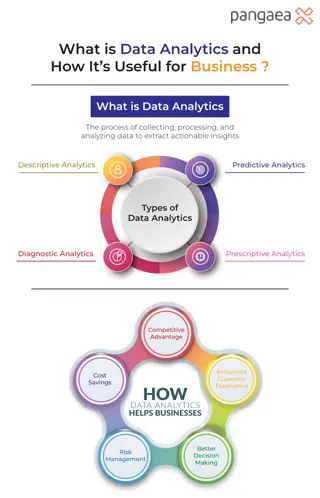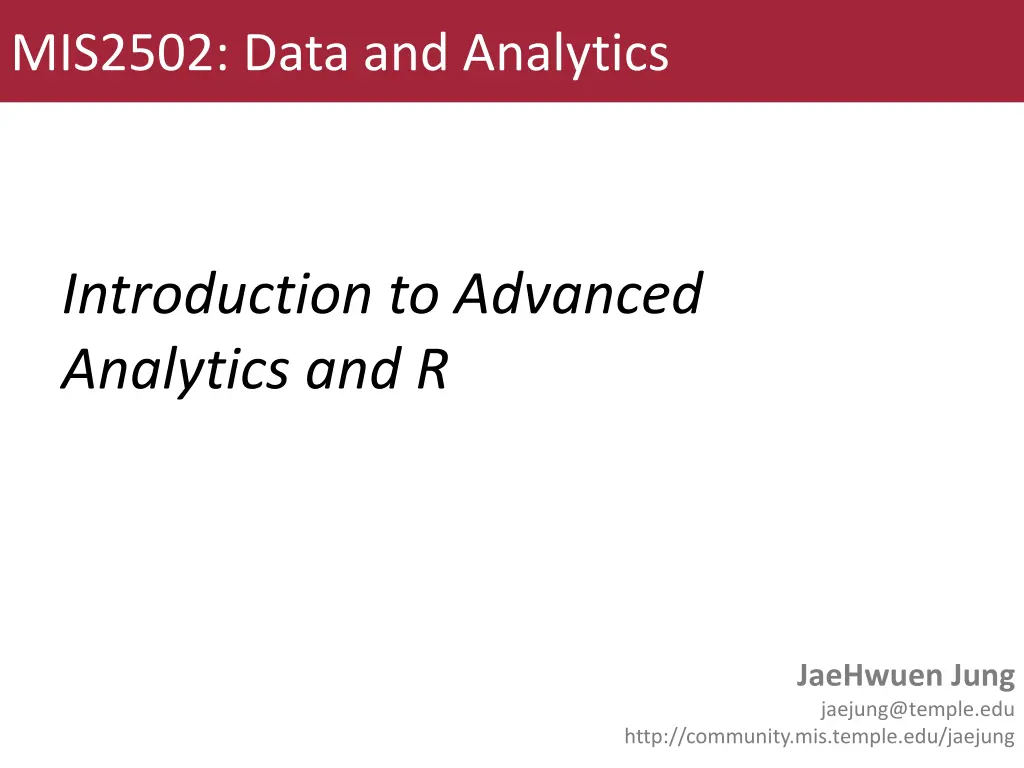
Advanced Data Analytics Insights
Learn about the information architecture of organizations, the concept of advanced data analytics, and how it differs from traditional sales analysis. Explore examples like smarter customer retention to understand the practical applications of advanced analytics in businesses.
Download Presentation

Please find below an Image/Link to download the presentation.
The content on the website is provided AS IS for your information and personal use only. It may not be sold, licensed, or shared on other websites without obtaining consent from the author. If you encounter any issues during the download, it is possible that the publisher has removed the file from their server.
You are allowed to download the files provided on this website for personal or commercial use, subject to the condition that they are used lawfully. All files are the property of their respective owners.
The content on the website is provided AS IS for your information and personal use only. It may not be sold, licensed, or shared on other websites without obtaining consent from the author.
E N D
Presentation Transcript
MIS2502: Data and Analytics Introduction to Advanced Analytics and R JaeHwuen Jung jaejung@temple.edu http://community.mis.temple.edu/jaejung
The Information Architecture of an Organization Now we re here Data entry Data Data analysis extraction Transactional Database Analytical Data Store Stores real-time transactional data in a relational or NoSQL database Stores historical transactional and summary data
What is Advanced Data Analytics? The examination of data or content using sophisticated techniques and tools, to discover deeper insights, make predictions, or generate recommendations. Goals: Exploration and analysis of large data sets to discover meaningful patterns Extraction of implicit, previously unknown, and potentially useful information from data Prediction of future events based on historical data
What advanced data analytics is not Sales analysis How do sales compare in two different stores in the same state? Profitability analysis Which product lines are the highest revenue producers this year? Sales force analysis Did salesperson X meet this quarter s target?
Advanced data analytics is about Sales analysis Why do sales differ in two stores in the same state? Profitability analysis Which product lines will be the highest revenue producers next year? Sales force analysis How much likely will the salesperson X meet next quarter s target?
Example: Smarter Customer Retention Consider a marketing manager for a brokerage company Problem: High churn (customers leave) Customers get an average reward of $150 to open an account 40% of customers leave after the 6 months introductory period Getting a customer back after they leave is expensive Giving incentives to everyone who might leave is expensive
Answer: Not all customers have the same value One month before the end of the introductory period, predict which customers will leave Offer those customers something based on their future value Ignore the ones that are not predicted to churn
Three Analytics Tasks We Will Be Doing in this Class Decision Trees Clustering Association Rule Mining
Decision Trees Used to classify data according to a pre-defined outcome Based on characteristics of that data Can be used to predict future outcomes http://www.mindtoss.com/2010/01/25/five-second-rule-decision-chart/ Predict whether a customer should receive a loan Uses Flag a credit card charge as legitimate Determine whether an investment will pay off
Clustering Used to determine distinct groups of data Based on data across multiple dimensions Customer segmentation Uses Identifying patient care groups Performance of business sectors http://www.datadrivesmedia.com/two-ways-performance-increases-targeting-precision-and-response-rates/
Association Rule Mining Find out which events predict the occurrence of other events my+REWARDS CARD Application Often used to see which products are bought together What products are bought together? Uses Amazon s recommendation engine Telephone calling patterns
Now we will start using R and RStudio heavily in class activities and assignments R/RStudio has become one of the dominant software environments for data analysis And has a large user community that contribute functionality Make sure you download both on your computer!
Integrated Development Environment for R Nicer interface that makes R easier to use Requires R to run Software development platform and programming language Open source, free Many, many, many statistical add-on packages that perform data analysis (The base/engine) (The pretty face) If you have both installed, you only need to interact with Rstudio Mostly, you do not need to touch R directly
RStudio Interface 3) Environment panel 1) Script Panel 4) Utility panel 2) Console Panel
RStudio Interface 1) Script Panel This is where the R code is shown and edited When you open a R code file, its content shows up here 2) Console Panel This is where R code is executed Results will show up here If there is error with your code, the error message will also show up here 3) Environment Panel This is where the variables and data are displayed It helps to keep track of the variables and data you have 4) Utility Panel This window includes several tabs Files: shows the path to your current file, not often used Plots: if you use R to plot a graph, it will show up here Packages: install/import packages, more on this later Help: manuals and documentations to every R functions, very useful
Creating and opening a .R file The R script is where you keep a record of your work in R/RStudio. To create a .R file Click File|New File|R Script in the menu To save the .R file click File|Save To open an existing .R file click File|Open File to browse for the .R file
The Basics: Calculations In its simplest form, R can be used as a calculator: Type commands into the console and it will give you an answer
The Basics: Functions sqrt(), log(), abs(), and exp() are functions. Functions accept parameters (in parentheses) and return a value
The Basics: Variables Variables are named containers for data <- and = do the samething The assignment operator in R is: <- or = Variable names can start with a letter or digits. Just not a number by itself. Examples: result, x1, 2b (not 2) rm() removes the variable from memory R is case-sensitive (i.e. Result is a different variable than result) x, y, and z are variables that can be manipulated
Basic Data Types Type Range Assign a Value X <-1 Y <- -2.5 Numeric Numbers name<-"Mark" color<-"red" Character Text strings TRUE or FALSE Logical (Boolean) female<-TRUE
Advanced Data Types Vectors Data frames
Vectors of Values A vector is a sequence of data elements of the same basic type. > scores<-c(65,75,80,88,82,99,100,100,50) > scores [1] 65 75 80 88 82 99 100 100 50 > studentnum<-1:9 > studentnum [1] 1 2 3 4 5 6 7 8 9 > ones<-rep(1,4) > ones [1] 1 1 1 1 > names<-c("Nikita","Dexter","Sherlock") > names [1] "Nikita" "Dexter" "Sherlock" c() and rep() are functions
Indexing Vectors We use brackets [ ] to pick specific elements in the vector. In R, the index of the first element is 1 > scores [1] 65 75 80 88 82 99 100 100 50 > scores[1] [1] 65 > scores[2:3] [1] 75 80 > scores[c(1,4)] [1] 65 88
Simple statistics with R You can get descriptive statistics from a vector > scores [1] 65 75 80 88 82 99 100 100 50 > length(scores) [1] 9 > min(scores) [1] 50 > max(scores) [1] 100 > mean(scores) [1] 82.11111 > median(scores) [1] 82 > sd(scores) [1] 17.09857 > var(scores) [1] 292.3611 > summary(scores) Min. 1st Qu. Median Mean 3rd Qu. Max. 50.00 75.00 82.00 82.11 99.00 100.00 Again, length(), min(), max(), mean(), median(), sd(), var() and summary() are all functions. These functions accept vectors as parameter.
Data Frames A data frame is a type of variable used for storing data tables is a special type of list where every element of the list has same length (i.e. data frame is a rectangular list) > BMI<-data.frame( + gender = c("Male","Male","Female"), + height = c(152,171.5,165), + weight = c(81,93,78), + Age = c(42,38,26) + ) > BMI gender height weight Age 1 Male 152.0 81 42 2 Male 171.5 93 38 3 Female 165.0 78 26 > nrow(BMI) [1] 3 > ncol(BMI) [1] 4
Identify elements of a data frame To retrieving cell values > BMI[1,3] [1] 81 > BMI[1,] gender height weight Age 1 Male 152 81 42 > BMI[,3] [1] 81 93 78 More ways to retrieve columns as vectors > BMI[[2]] [1] 152.0 171.5 165.0 > BMI$height [1] 152.0 171.5 165.0 > BMI[["height ]] [1] 152.0 171.5 165.0
Packages Packages (add-ons) are collections of R functions and code in a well-defined format. To install a package: install.packages("pysch") Each package only needs to be installed once For every new R session (i.e., every time you re-open Rstudio), you must load the package before it can be used library(psych) or require(psych)
Import Data into R R can handle all kinds of data files. We will mostly deal with csv files Use read.csv() function to import csv data You need to specify path to the data file By default, comma is used as field delimiter First row is used as variable names You can simply do this by Download source file and csv file into the same folder (i.e., C:\RFiles). Set that folder as working directory by assigning source file location as working directory
Working directory The working directory is where Rstudio will look first for scripts and files Keeping everything in a self contained directory helps organize code and analyses Check you current working directory with getwd()
To change working directory Use the Session | Set Working Directory Menu If you already have an .R file open, you can select Set Working Directory>To Source File Location .
Reading data from a file Usually you won t type in data manually, you ll get it from a file Example: 2009 Baseball Statistics (http://www2.stetson.edu/~jrasp/data.htm) reads data from a CSV file and creates a data frame called teamData that store the data table. reference the HomeRuns column in the data frame using TeamData$HomeRuns
Looking for differences across groups: The setup We want to know if National League (NL) teams scored more runs than American League (AL) Teams And if that difference is statistically significant To do this, we need a package that will do this analysis In this case, it s the psych package Downloads and installs the package (once per R installation)
Looking for differences across groups: The analysis (t-test) describeby(teamData$Runs, teamData$League) Broken up by group (League) Variable of interest (Runs) Results of t-test for differences in Runs by League)
Histogram hist(teamData$BattingAvg, xlab="Batting Average", main="Histogram: Batting Average") hist() first parameter data values xlab parameter label for x axis main parameter - sets title for chart
Plotting data plot(teamData$BattingAvg,teamData$WinningPct, xlab="Batting Average", ylab="Winning Percentage", main="Do Teams With Better Batting Averages Win More?") plot() first parameter x data values second parameter y data values xlab parameter label for x axis ylab parameter label for y axis main parameter - sets title for chart
Running this analysis as a script Use the Code | Run Region | Run All Menu Commands can be entered one at a time, but usually they are all put into a single file that can be saved and run over and over again.
Getting help help.start() general help help(mean) help about function mean() ?mean same. Help about function mean() example(mean) show an example of function mean() help.search("regression") get help on a specific topic such as regression.
Online Tutorials If you d like to know more about R, check these out: Quick-R (http://www.statmethods.net/index.html) R Tutorial (http://www.r-tutor.com/r-introduction) Learn R Programing (https://www.tutorialspoint.com/r/index.htm) Programming with R (https://swcarpentry.github.io/r- novice-inflammation/ There is also an interactive tutorial to learn R basics, highly recommended! (http://tryr.codeschool.com/)


